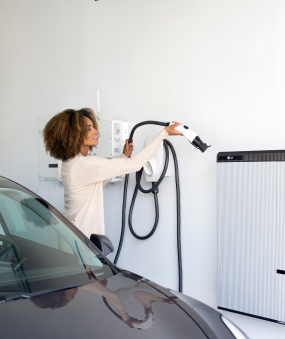Our Incredible, Unfathomable, Deteriorating Energy Grid
It’s become so embedded in the backdrop of modern life that many of us don’t appreciate it, or realize that it’s struggling to keep up..
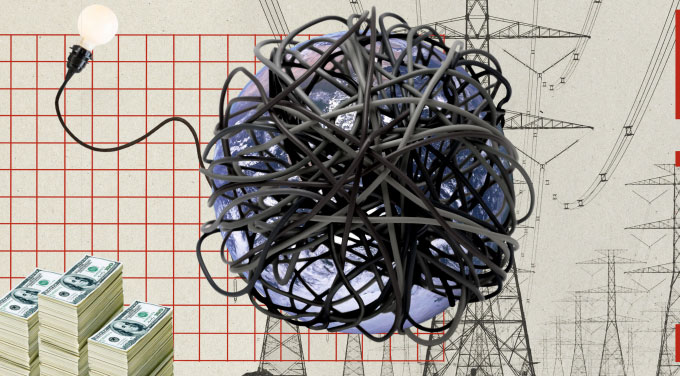
Here are a few things I bet you didn’t know about the U.S. electric grid:
- It contains enough power lines to wrap around the equator of the earth over 200 times1. The Scientific American has called it the “largest interconnected machine on earth.”2
- We’ve been passing electricity through wires strung from poles since 1889, which is about as long as we’ve had toilet paper3.
- People initially hated the idea of poles and wires running through their neighborhoods so much that they would chop them down with axes. Or stand at their curbs with guns to stop workers from installing them in the first place.4
If that last one sounds crazy to you, you’re not alone. Power lines are such a normal part of American life today that we rarely stop to think about them at all. So it’s strange to imagine people being violently opposed to them.
But 130 years ago, people couldn’t wrap their heads around the idea. Consider this: ten years after Alexander Graham Bell had successfully conjured up the magic we know as the telephone, he was still struggling to convince people it was practical. The hold up for Bell’s critics? Not the invention itself, but the infrastructure it would require to implement it. Most people (particularly Bell’s financial backers) just couldn’t fathom “the idea that every home in the country could be connected by a vast network of wires suspended from poles set an average of one hundred feet apart.”5
That’s a bit of a head-scratcher for us now, but it’s true. And to be fair, we probably couldn’t fathom it either if not for the fact that a mind-bending network of poles and wires is all we know today.
Phone lines today are commonly included on the same poles with electric lines and, altogether, this collection of poles and lines represents a truly remarkable human achievement. Few of us actually take the time to think about it but, in a time when nearly all human connection seems to have become virtual, it’s impressive that you can still trace a literal, physical connection from your home to the home of millions of others.
Not surprisingly, a machine this vast took some time to build. The first electric power transmission in North America took place in 1889 between downtown Portland, Oregon and a generating station at Willamette Falls in Oregon City.6

Those millions of miles worth of zigzagging lines provide enough coverage that a community without power lines might feel as foreign to most of us as Bell’s late 1800s vision of poles and wires felt to his generation. These things really are so abundant nationwide today that we have a hard time conceiving of an energy system that doesn’t include them. And most of us also don’t often stop to consider how fundamental power is to the way most of the country operates every single day. That is, at least, until the grid stops working the way it is supposed to. And then that’s pretty much all we can think about.
I mean, can you think of many things able to more quickly bring entire communities to their knees than a power outage?
The specific causes of a power outage vary, but generally speaking, most are the result of at least one of three simple things: swelling demand, aging infrastructure, or weather. Big outages that grab national headlines are typically the result of a combination of those three. And this, as they say, is where the plot thickens.
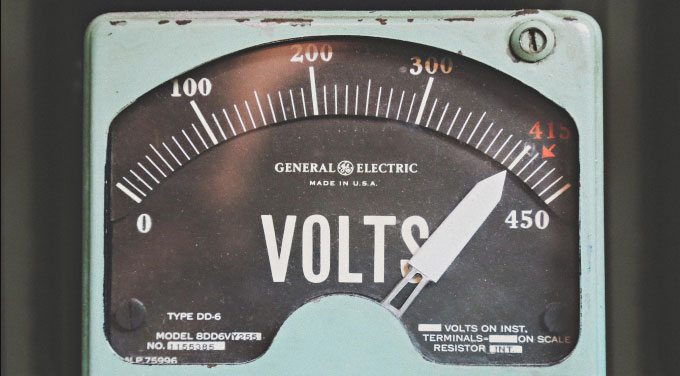
Growing Demand
The first big problem facing our electric grid is simple but probably inescapable: it’s the basic issue of increased demand.
Not only has the population of the country grown significantly (from 62 million in 1889 to 331 million in 20218) since that first power line but easy access to power has spawned the creation of more and more devices that use power. So the number of people needing power has grown but also the amount of power each individual wants/needs has grown too.
This is simple enough to grasp conceptually but it doesn’t usually occur to us as a day-to-day reality that needs confronting. But it’s true, the burden of increased demand is a very real thing. In fact, you might be surprised to know that power lines actually visibly sag lower when energy demand is highest (such as on hot days when everyone has the AC going steady)9. But outside of this subtle visual evidence of the heavy demand we’re putting on them, we don’t really think about what we’re collectively expecting from all these poles and wires until things go south in a serious way. Take what happened in Texas in early 2021 as an example. There were several factors at play for that newsworthy energy crisis10 but mixed into the middle of it was the simple issue of millions of people turning up their heat at the same time.
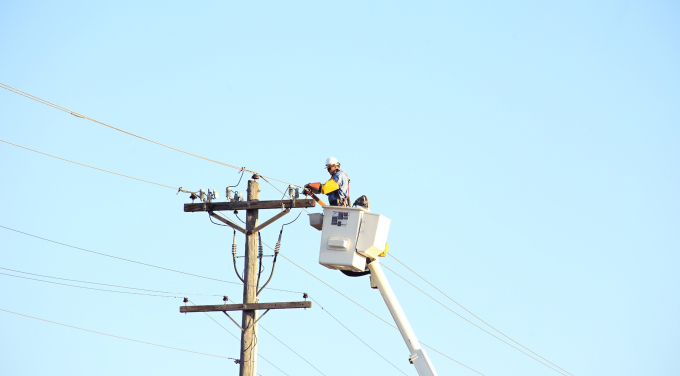
Aging Grid Infrastructure
A second big obstacle is a universal problem nobody, anywhere, has yet solved—old age. It probably goes without saying that the world we inhabit today has changed dramatically since that first power line went up in 1889. So, in addition to routine maintenance and damage control, there is also a need to update the grid to maximize the benefits of new technologies (for example, renewable energy sources like solar and wind). And although there’s been plenty of effort to keep the grid up-to-date, the truth is that we’re not doing a particularly good job of it. Our most recent grade on the nation’s energy infrastructure was a decidedly less-than-stellar C-.11
The point here isn’t to place blame. It’s simply to make clear that updating and maintaining a machine composed of millions of miles of equipment—which is kept outside, traverses every landscape in the country, and is within striking distance of the millions of cars and other motor vehicles whisking around the U.S.—is an enormous undertaking. And enormous undertakings tend to eat up an enormous amount of resources: time, labor, innovation, and money. Definitely money.
“Unless hundreds of billions of dollars worth of additional investments are made in the U.S. grid in the next two decades, the country could experience significant power reliability issues.”
According to S&P Global, “unless hundreds of billions of dollars worth of additional investments are made in the U.S. grid in the next two decades, the country could experience significant power reliability issues.”12 That’s not good news. And, in case our basic civics and economics education has gotten a little fuzzy, it’s worth pointing out that we, the American taxpayers, ultimately foot the bill of big government infrastructure projects.
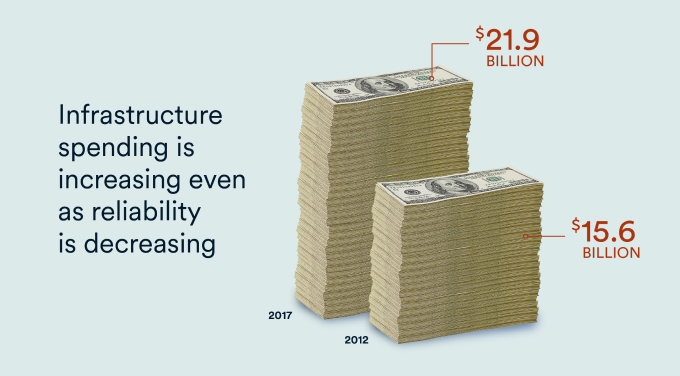
So, in short, the grid is aging and keeping it young is not easy. And as it ages we’ll continue to see issues with basic functionality.
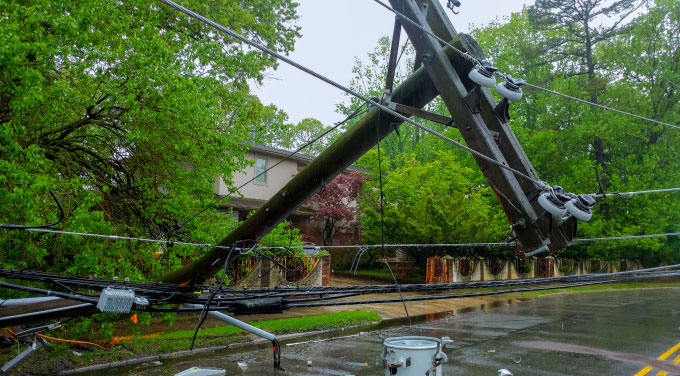
Extreme Weather Wreaking Havoc
The third problem—weather—is also not something we can entirely avoid (sensing a theme here?). In fact, it’s the grid’s original enemy: the power station in Oregon where the grid first started in America was destroyed by a flood just one year after its inaugural transmission.13
Today, more than ever, extreme weather of all kinds has the potential to wreak havoc on our electric grid and disrupt home life in serious ways. Sadly, data isn’t necessary anymore to convince millions of Americans of the dangers of extreme weather events. The wildfires in California, hurricanes along the gulf and east coasts, and winter storms in the northeast and Texas (of all places) have made this problem a more visceral reality than even the most well-designed graph or chart could drive home.
Regardless of your opinion on climate change, it’s undeniable that more people are in danger of being harmed by extreme weather today than ever before—if only because there are more of us around to be harmed. And the interdependent nature of our energy infrastructure means that the reach of weather-induced damage is broad. Your house doesn’t need to be hit by a tsunami or touched by the flames of a wildfire for your life to be completely upended, in other words. Events like that can happen miles away and cause outages for millions of homes that otherwise would have been out of harm's way.
At the risk of sounding overly doom-and-gloom, the bare fact is this:

What Do We Do About It?
Taken together, these problems are now bringing questions about our existing grid infrastructure into much sharper national focus. Discussions about modernizing the grid or trying different approaches altogether are becoming more common and more mainstream. And consideration of the sun—the oldest, most obvious power source we’ve got—as a global-scale solution is being taken more seriously than ever before.
Nothing on earth can compare with the sun’s energy output. So the question has never been about whether the sun can provide enough energy. It’s always been about whether or not we can figure out how to effectively use it to help meet the demands of our modern age.
The great news is that technological innovation isn’t a problem. Really. No caveats. We have what we need to harness the energy of the sun and put it to work.
we could provide half of the country’s total energy needs simply by putting the exact kind of panels and equipment we’re using today on all the suitable, available roof space in America.
Innovation will continue, and that should mean greater efficiency at a lower price. But even if technological innovation stopped right now, we could provide half of the country’s total energy needs simply by putting the exact kind of panels and equipment we’re using today on all the suitable, available roof space in America. That would bring the obvious environmental benefits but also relieve the burden on our aging grid in a way that’s tough to overstate.
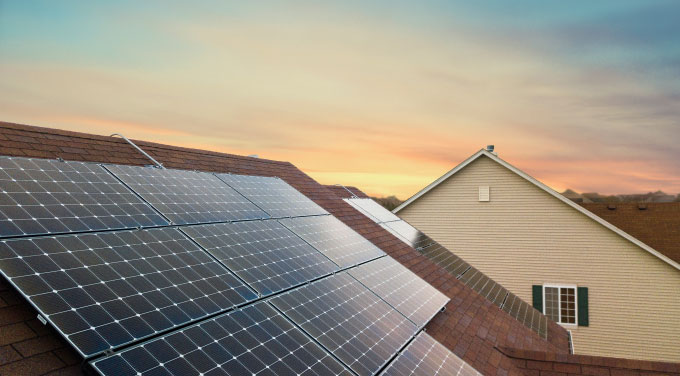
One of rooftop solar’s most underrated benefits is that it offers power that is consumed right where it’s produced—no need to transmit electricity over miles and miles through those wires. So not only do the individual homes benefit, but the entire grid can as well because every home with solar gives our aging grid one less hungry mouth to feed, so to speak. When you add home batteries to that mix, the benefits grow exponentially (and again, the tech is already here—no need to wait for more advancement there.)
The perk of a battery for individual households is pretty obvious: you have power even when outages occur. Solar home batteries kick on instantaneously when the grid goes down and recharge each new day when sunshine starts hitting their panels. So if you want a solution to outages on the individual home level, you’ve got it: solar with battery.
As exciting a prospect as that is, it’s just scratching the surface of the broader transformations to our energy system that are possible. Virtual power plants, microgrids, or grid services are all terms you likely haven’t heard often (or ever). They deserve an article of their own but, in a nutshell, these are innovations that make it possible to use the stored solar energy from an individual home battery to support the broader community by pulling a portion of that energy into the grid in times of urgent need. They’re already existing and they’re a prime example of why it’s okay to be optimistic about the future of our energy system—even in the face of the massive obstacles briefly outlined here.
The challenges inherent in powering the lives of hundreds of millions of people can’t simply be erased. But they can be handled. And they can be handled better. We can continue to dump billions of dollars into the endless chase to maintain our existing system or we can look to solutions that capitalize on modern innovation and account for the dire need to build sustainably. Of course there is plenty that still needs to be figured out in the discussion about America’s energy infrastructure but that’s exactly why it’s time to retire old tactics we know won’t work.
It was outside-the-box thinking that brought us an approach to energy that has powered the most advanced society in human history. But now, 130 years later, that thinking is not just inside the box, it is the box. And we’re going to need to think outside it if we want to power all that’s coming for the next 130.
- 1. “U.S. Electricity Grid & Markets.” EPA.
- 2. “U.S. Electrical Grid Undergoes Massive Transition to Connect to Renewables.” Scientific American.
- 3. “June 3, 1889: Power Flows Long-Distance.” Wired.
- 4. “War on Telephone Poles.” New York Times.
- 5. “Time and Distance Overcome.” By Eula Biss, published by NPR.
- 6. “June 3, 1889: Power Flows Long-Distance.” Wired.
- 7. “U.S. Electricity Grid & Markets.” EPA.
- 8. “U.S. and World Population Clock.” US Census Bureau.
- 9. The heavy load causes conductors (typically made of copper or aluminum) to expand, thus increasing the slack on lines between poles or towers.
- 10. “As the Texas power crisis shows, our infrastructure is vulnerable to extreme weather.” MIT Technology Review.
- 11. “US Energy Infrastructure Report Card.” ASCE.
- 12. “America needs hundreds of billions of dollars in grid improvements.” SP Global.
- 13. “History of electric power transmission.” Wikipedia.


